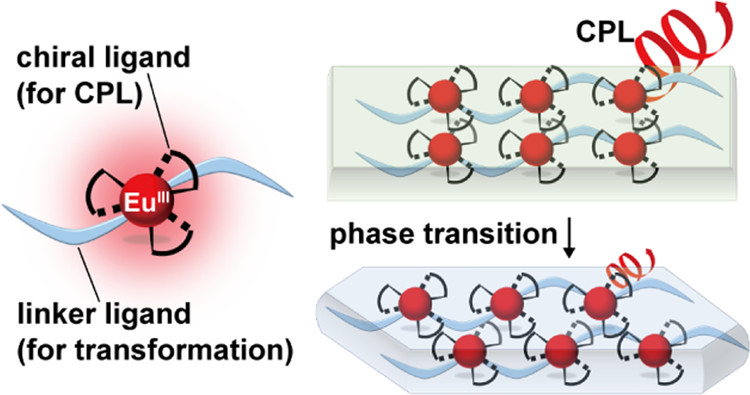When a chiral molecule emits circularly polarized light, it emits some combination of left- and right-circularly polarized light. Molecules that predominantly emit either only left- or only right-circularly polarized light are of interest since they can potentially be used for creating 3D displays as well as security inks for sensitive, important documents such as passports. Understanding what affects the mix of circularly polarized light that a molecule emits is key to developing novel functional materials.
A team led by ICReDD Prof. Yasuchika Hasegawa has now demonstrated that the orientation of the polymer chains in a Europium-based coordination polymer has a significant effect on the mix of circularly polarized light that is emitted. Researchers succeeded in designing a coordination polymer undergoes a phase transition when heated. This phase transition involved a change in arrangement of the linker molecules, and it was found that the molecule emitted a significantly different mix of circularly polarized light after the phase transition. Spectroscopic measurements in combination with calculations performed by ICReDD Prof. Tetsuya Taketsugu’s group confirmed the relationship between linker molecule arrangement and the change in circularly polarized light emission. This finding provides valuable insight for engineering materials with optimized circularly polarized light emission properties.
For details, read the full paper here.


